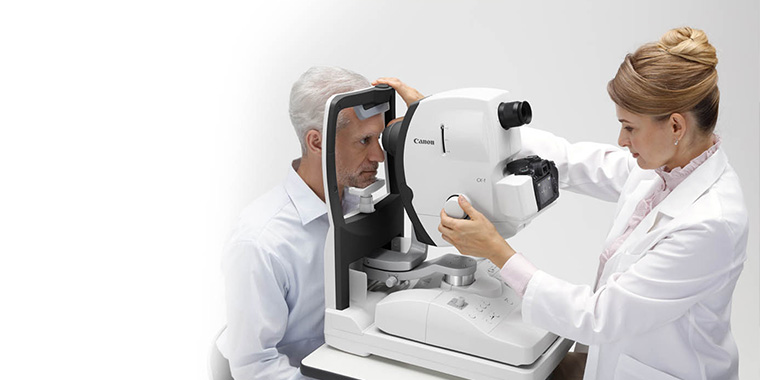Professional Ophthalmologist in Andalusia: Your Vision Deserves the most effective
Professional Ophthalmologist in Andalusia: Your Vision Deserves the most effective
Blog Article
The Pros and Disadvantages of Various Refractive Surgical Procedures for Boosted Eyecare

LASIK Surgery
LASIK surgical procedure is a typically done refractive procedure that intends to correct vision issues such as farsightedness, nearsightedness, and astigmatism. This medical strategy has obtained appeal as a result of its effectiveness in providing clients with clearer vision and decreasing their dependence on glasses or call lenses. During the treatment, a thin flap is created on the cornea, and a laser is used to reshape the underlying cells, remedying the refractive mistake. The flap is after that rearranged, permitting for fast recovery and very little discomfort for the person.
One of the primary benefits of LASIK surgical treatment is the fast improvement in vision experienced by lots of individuals. It is essential for people thinking about LASIK surgical treatment to undergo a complete evaluation by an eye treatment professional to figure out if they are ideal prospects for the procedure.
PRK Procedure
The PRK treatment, also known as Photorefractive Keratectomy, is a type of refractive surgery that intends to deal with vision issues comparable to LASIK surgical procedure. Unlike LASIK, which entails developing a flap in the cornea, PRK works on the surface area layer of the cornea.
One of the benefits of PRK over LASIK is that it gets rid of the risk of flap-related difficulties considering that no flap is produced during the surgical treatment. Despite the longer recovery period, PRK can be a suitable alternative for individuals looking for vision improvement surgical procedure.
SMILE Surgical Treatment
A cutting-edge refractive surgical treatment technique acquiring popularity in the area of ophthalmology is SMILE Surgery. Little Laceration Lenticule Removal (SMILE) is a minimally invasive procedure that remedies vision by reshaping the cornea utilizing a femtosecond laser. Unlike traditional LASIK surgery, SMILE Surgical procedure involves producing a tiny laceration in the cornea to extract a lenticule, which leads to much less interruption to the corneal structure and potentially much faster recovery times.
One of the primary advantages of SMILE Surgical treatment is its capacity to treat nearsightedness (nearsightedness) and astigmatism with high accuracy, bring about superb visual results for clients. The minimally intrusive nature of the procedure also minimizes the threat of difficulties such as dry eye syndrome, making it a positive alternative for people looking for refractive surgical procedure.

LASEK Technique
Having checked out the advantages and factors to consider of SMILE Surgical procedure, an additional notable refractive surgery technique worth analyzing is the LASEK Method. LASEK, which means Laser-Assisted Subepithelial Keratectomy, is a form of laser eye surgical treatment that intends to remedy refractive mistakes such as nearsightedness (nearsightedness), hyperopia (farsightedness), and astigmatism.
Unlike LASIK, LASEK does not include creating a corneal flap. Rather, during a LASEK procedure, the surgeon utilizes a diluted alcohol solution to loosen up the slim outer layer of the cornea, known as the epithelium.
One of the key benefits of LASEK is that eye doctors in andalusia it can be appropriate for individuals with slim corneas who might not be good candidates for LASIK. In addition, LASEK normally results in marginal post-operative pain and a quicker healing time contrasted to PRK. The visual recuperation process with LASEK might be slightly longer than with LASIK.
Implantable Call Lenses
Implantable Call Lenses provide a long-term vision improvement service for people seeking an option to typical get in touch with lenses or glasses. These lenses, additionally known as phakic intraocular lenses, are operatively put into the eye to fix refractive mistakes such as myopia (nearsightedness), hyperopia (farsightedness), and astigmatism. cardiologist andalusia. Unlike standard get in touch with lenses that sit on the surface of the eye, implantable get in touch with lenses work within the eye itself, offering clear vision without the need for daily maintenance or elimination
One of the key benefits of implantable call lenses is their durability. As soon as placed, they can remain in the eye forever, supplying steady and regular vision adjustment. Additionally, these lenses can be a superb option for individuals who are not great candidates for laser eye surgical procedure or that prefer a reversible vision adjustment treatment.
Nevertheless, implantable get in touch with lenses do bring some dangers, consisting of the capacity for cataracts or raised eye pressure. It is important for individuals considering this choice to seek advice from an eye treatment specialist to identify if implantable call lenses are the appropriate selection for their specific requirements and eye wellness.
Verdict
In verdict, each type of refractive surgical treatment has its very own advantages and downsides. LASIK surgery is preferred for its quick recuperation time, while PRK treatment may be appropriate for clients with slim corneas. SMILE surgical treatment provides minimal pain throughout the procedure, yet LASEK strategy may have a longer healing procedure. Implantable get in touch with lenses offer an option for those that are not suitable prospects for standard surgical treatments. Patients should seek advice from with their eye treatment company to identify the most effective choice for their individual needs.

On The Whole, SMILE Surgery offers an appealing alternative for people looking to improve their vision via refractive surgical procedure.
Report this page